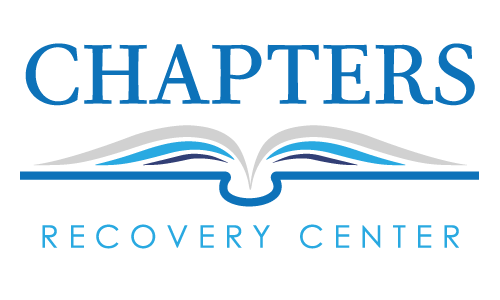Stimulant abuse of medications like Adderall has been around for years but recently, it has become more and more of a trend These medications have been popularized to be taken increasingly in recreational and non-medical contexts. Whether it’s for a party or to prepare for a test, access to these stimulants is extremely prevalent, especially among young people. Having an Adderall prescription is almost like having the new “it” item for the season. While it can be helpful to those who need it, abusive behavior demands more attention and understanding to effectively address the root cause and consequences of stimulant misuse. Exploring the factors that contribute to the rise of stimulant abuse and the repercussions of such behavior is the first step in finding an avenue for help.
Understanding the Rise of Stimulant Abuse
How does stimulant abuse begin? It has become a familiar cycle.
- Accessibility: Stimulant medications like Adderall are often prescribed for conditions like ADHD, making them readily available in households and among young people. This accessibility creates the ideal situation for misuse. A teenager with the increasing pressure of academic success or performance enhancement can see it as an ideal easy fix. They notice the increased productivity while on the medication and crave to overwork its power.
- Pressure to Perform: In a hyper-competitive society, there’s immense pressure to excel academically, professionally, and socially. Stimulants are sometimes seen as a shortcut to heightened focus, energy, and productivity, leading individuals to resort to abuse to meet these demands. This is how a stimulant prescription begins to seep into the lives of college students. The student who saw its benefit in high school brings it to university and gets their friends to take it in an effort to help them increase their academic potential.
- Social Acceptance: The normalization of stimulant use in popular culture and media contributes to its acceptance among young adults and professionals. The drugs begin to be glamourized as more than just a quick academic fix and people begin to use them at parties. Portrayals of stimulants in movies or on social media as performance enhancers or party drugs can perpetuate misconceptions and encourage experimentation. Now, it’s not just the students who want to do better in school taking them, it’s also those who want to party.
- Escapism and Self-Medication: Some individuals turn to stimulants as a means of escaping reality or coping with underlying mental health issues such as depression or anxiety. In some cases, the use of this medication causes a temporary euphoria and offers a respite from emotional pain or distress. This side effect can also be the reason why some adults on the medication begin to abuse it. They become addicted to this feeling and begin to take it whenever they are feeling down.
- Peer Influence: Peer pressure and social dynamics play a significant role in stimulant abuse, with friends or acquaintances normalizing and encouraging experimentation. An individual with a stimulant prescription who begins to misuse it for its euphoric feeling is more likely to push the drug to its limit. This is where you begin to see social gatherings and events revolve around the use of stimulants, further reinforcing their allure.
Consequences of Stimulant Abuse
Prolonged misuse of stimulants can lead to a range of adverse effects. Recognizing the consequences of dependency and addiction is crucial in addressing stimulant abuse and promoting healthier habits and coping strategies. Some of the worst impacts are;
- Physical Health Risks: Prolonged stimulant abuse poses serious risks to physical health, including heightened susceptibility to cardiovascular complications such as hypertension, irregular heartbeat, and increased risk of heart attack or stroke. Additionally, stimulants can exert neurotoxic effects on the brain, potentially leading to neurological damage, cognitive impairments, and increased risk of seizures. Furthermore, the risk of overdose is elevated with continued abuse, as individuals may escalate their dosage in pursuit of desired effects, leading to life-threatening complications such as respiratory distress, seizures, or cardiac arrest.
- Psychological Impacts: Chronic stimulant abuse can profoundly impact mental health, exacerbating pre-existing conditions such as anxiety, paranoia, and psychosis. Prolonged stimulant use can induce or worsen symptoms of anxiety disorders, leading to persistent feelings of unease, apprehension, or panic attacks. Paranoia may develop, characterized by irrational beliefs of persecution or surveillance, contributing to social isolation and impaired functioning. In severe cases, stimulant-induced psychosis may manifest, marked by hallucinations, delusions, and disorganized thinking, necessitating immediate medical intervention.
- Social and Occupational Dysfunction: Stimulant abuse can erode social relationships, strain familial bonds, and alienate loved ones due to erratic behavior, mood swings, or neglect of responsibilities. Academic or professional performance may suffer as a result, with individuals experiencing difficulties concentrating, completing tasks, or meeting deadlines. Persistent substance use may lead to absenteeism, poor job performance, or disciplinary actions, jeopardizing one’s livelihood and prospects.
- Legal Ramifications: Possession, distribution, and use of illicit stimulants carry significant legal consequences. Law enforcement agencies rigorously enforce drug laws, with individuals caught in possession of illegal stimulants facing legal penalties ranging from misdemeanor charges to felony convictions, depending on the quantity and circumstances of the offense. A criminal record resulting from stimulant-related offenses can hinder access to employment opportunities, educational institutions, and other aspects of community life.
Recognizing Misuse of Stimulants:
While not everyone on stimulant medication develops abusive behavior, it is important to stay on top of the signs. Keeping an open and honest conversation with the psychiatrist who is prescribing it is the first step in making sure you are not misusing the medication. Here are a few things to keep in mind when wondering if you or someone is misusing stimulants.
- Increased Tolerance: If you find yourself needing larger doses of stimulants to achieve the desired effects or experiencing diminished effects over time, it may indicate developing tolerance and potential misuse.
- Changes in Behavior: Pay attention to shifts in mood, energy levels, and behavior patterns, particularly if they coincide with stimulant use. Erratic or reckless behavior, agitation, or paranoia can be red flags of abuse.
- Relationship Strain: Notice how stimulant use affects your relationships with family, friends, or colleagues. Difficulty maintaining connections, conflicts arising from substance use, or withdrawal from social activities may signal a problem.
- Health Concerns: Be mindful of physical and mental health changes associated with stimulant abuse, such as weight loss, insomnia, anxiety, or cognitive impairments. Seeking medical evaluation and intervention is crucial if these symptoms arise.
- Self-Reflection: Take a step back and assess your motives for stimulant use. Are you using them to enhance performance, cope with stress, or escape reality? Honest self-reflection can illuminate underlying issues driving misuse.
Treatment Options for Stimulant Abuse
There is always a light at the end of the tunnel. Treatment for stimulant abuse is one of hope, offering individuals a pathway to healing, recovery, and renewed purpose. While the road to recovery may be challenging, with setbacks and obstacles along the way, every step forward brings them closer to a brighter tomorrow. With determination, support, and a commitment to change, individuals can overcome the grip of stimulant abuse, reclaim their lives, and embrace a future filled with possibility and fulfillment. The best options are:
- Professional Counseling: Seek guidance from licensed therapists or counselors specializing in substance abuse treatment. Cognitive-behavioral therapy (CBT) and motivational interviewing are effective approaches for addressing underlying issues and fostering behavior change.
- Medication-Assisted Treatment (MAT): Consider medication options, such as bupropion or modafinil, under the supervision of a healthcare provider to manage withdrawal symptoms and cravings during recovery from stimulant addiction.
- Support Groups: Engage in support groups like Narcotics Anonymous (NA) or SMART Recovery, which provide peer support, accountability, and resources for individuals navigating the challenges of stimulant abuse recovery.
- Lifestyle Changes: Adopt healthy lifestyle habits, including regular exercise, nutritious eating, adequate sleep, and stress management techniques, to support overall well-being and resilience in recovery.
- Holistic Approaches: Explore complementary therapies such as mindfulness meditation, acupuncture, or yoga to address physical, emotional, and spiritual aspects of healing from stimulant abuse.
The rise of stimulant abuse underscores the need for comprehensive awareness, prevention efforts, and accessible treatment options. By understanding the underlying factors driving misuse, recognizing warning signs, and seeking support early on, individuals can embark on a path toward recovery and reclaim control over their lives. Chapters Recovery Center, along with similar organizations, provides the essential resources and support needed for individuals on their path to recovery. Remember, help is available, and recovery is possible with dedication and support. Reach out to us at Chapters Recovery Center for more information.








